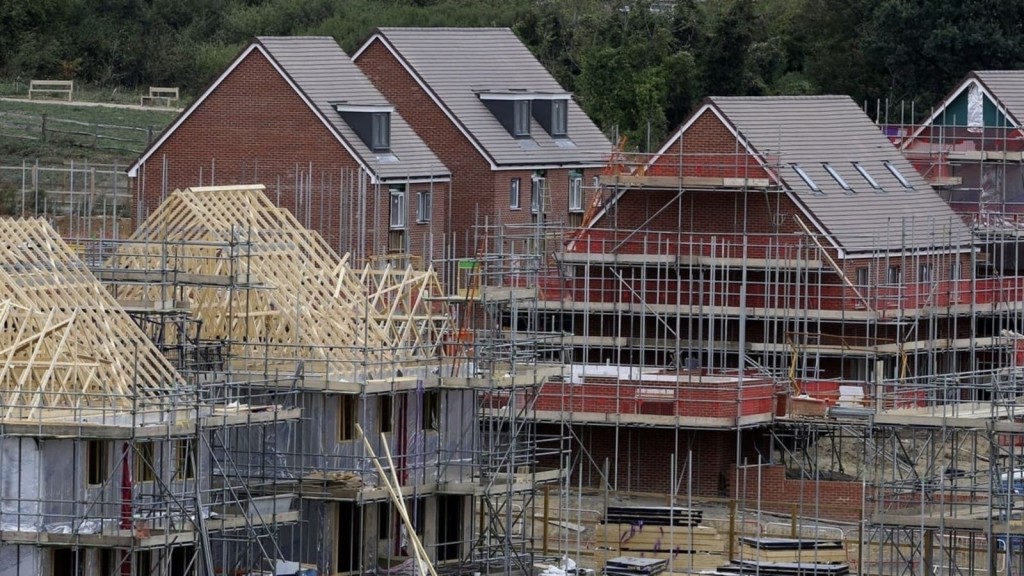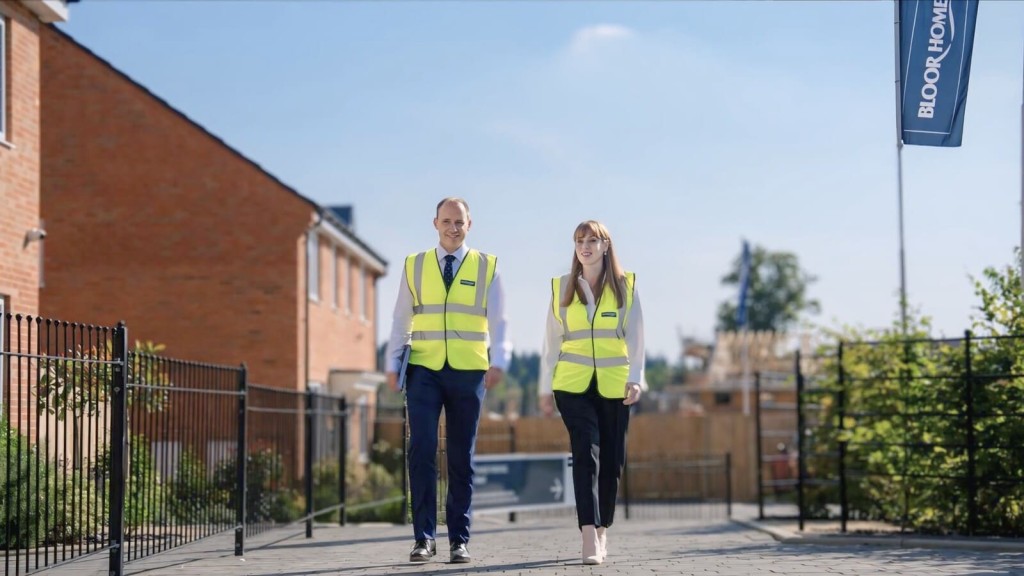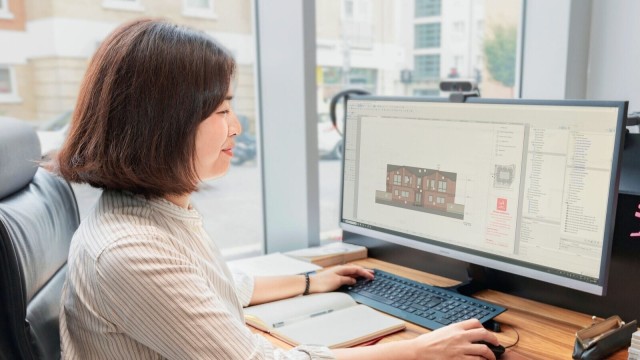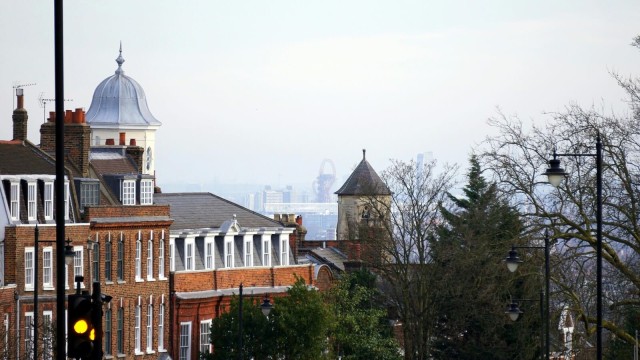Read next
The latest news, updates and expert views for ambitious, high-achieving and purpose-driven homeowners and property entrepreneurs.


In the lead-up to the election, the Labour Party promised big change in the housing sector, including major planning reforms and a house building boom.
And, only a few weeks after their election win, the new government started rolling out its plans to deliver on that commitment.
On the 30th of July 2024, Deputy Prime Minister Angela Rayner confirmed that mandatory local housing targets would be reinstated after being relaxed by the Tories in late 2022. Plus, the original annual target of 300,000 homes would be increased to 370,000; a significant jump, particularly given the previous government’s inability to reach its own less ambitious aim.
In her speech, Rayner promised that the new government would “build 1.5 million homes that are high quality, well designed, and sustainable… [achieving] the biggest boost to affordable housing for a generation.”
So, what does all this mean?
In this article, we’ll explain exactly what these housing targets are, why they were scrapped in the first place, and whether their return is a good or bad thing for Britain. Plus, we’ll take a look at what else the government has in store when it comes to housing.
Let’s jump in.

Local housing targets are benchmarks set for local councils to ensure a certain number of homes are built in their jurisdictions within a specified time period.
Introduced by the Conservatives in 2019 to streamline housing development, the targets aim to meet the housing demands of a growing population and address regional disparities in housing supply. They do this by putting pressure on local authorities to deliver housing, compelling them to approve development, rather than to resist new proposals.
The targets see that every council across the country plays its role in delivering the ongoing national target of homes per year, and helps guide local planning authorities (LPAs) in decision making when it comes to determining planning proposals.
When the targets were first implemented, they were generally viewed as a positive step toward ensuring LPAs were working toward delivering the homes required. However, some councils believed the rules were too harsh for their regions, particularly those partially within the Green Belt or other protected areas that made development difficult.
This ultimately led to the targets being dropped, which we’ll take a closer look at now.
In 2022, the Conservative government relaxed mandatory housing targets, allowing councils the flexibility to set their own goals rather than having to work within nationally imposed targets.
It was reported at the time that former PM Rishi Sunak removed compulsory targets because of pressure from Tory councillors, who were essentially threatening mutiny if he failed to dispose of the policy.
In a nutshell, up to 100 Tory MPs threatened to support an amendment that would pressure the government to abandon the 300,000 target. So, Sunak scrapped the target to avoid being made a fool by his own party in the House of Commons.
This led to a significant reduction in housing developments, exacerbating the housing crisis, and contributing to rising property prices and rental costs.
At the time, the decision was branded as “weak” by the opposition, who believed Sunak had put his party before the people of Britain.

In short, mandatory local housing targets are returning to try and get the country back on track when it comes to housebuilding.
When announcing the return of the targets, Angela Rayner said, “Whilst the previous government watered down housing targets, caving into their anti-growth backbenchers, this Labour government is taking the tough choices putting people and country first.”
Rayner continued, stating that the targets will be mandatory rather than advisory and that they will require local authorities to “use the same method to work out how many homes to build.”
The deputy PM also explained that the standard method for calculating housing need is also going to be updated to “better reflect the urgency of supply for local areas.”
And, instead of using outdated housing data to determine targets, the new method will “require local authorities to plan for homes proportionate to the size of existing communities, and it will incorporate an uplift where house prices are most out of step with local incomes.”
Importantly, on the same day Rayner announced the reinstatement of mandatory local housing targets at the Chamber, the government initiated a consultation to update the National Planning Policy Framework (NPPF).

The government’s consultation text that accompanied the new NPPF cuts straight to the point, highlighting Labour’s sincerity when it comes to the party’s ambitious homebuilding intentions.
An excerpt from the consultation reads:
“We will not deliver our target of 1.5 million homes if too little land is allocated. It is clear that the current level of ambition is too low: our analysis suggests that housing requirements in adopted plans only add up to approximately 230,000 homes per annum and the latest OBR (Office for Budget Responsibility) forecast indicates that this year the number of net additions will fall below 200,000 homes.”
In the next point, the consultation says:
“We are starting from a point that falls far short of the homes that are needed so we need to act decisively if we are to ramp up new supply. We are therefore boosting the overall target to a level that provides resilience, building capacity into the system to catch up.”
This explains the government not only bringing back the targets but also why they’re hiking up the national goal by 70,000 homes annually.
And, reiterating what Angela Rayner mentioned in regard to the new standard method of housing supply now being the only method, line 62 of the updated 2024 NPPF reads:
“To determine the minimum number of homes needed, strategic policies should be informed by a local housing need assessment, conducted using the standard method in national planning guidance. In addition to the local housing need figure, any needs that cannot be met within neighbouring areas should also be taken into account in establishing the amount of housing to be planned for.”
This updated paragraph removes the chunk of text that formerly referred to the standard method as being “advisory” and cuts the section that suggested there were other alternative routes available for measuring housing need. Now, all councils will need to work to the same method of measurement.
While local governments will still ultimately have control over what will and won’t be built in their communities, the reinstated targets mean councils now need to prioritise getting homes built. This may result in the approval of housing projects that, without the targets, councils might not have accepted.
The return of mandatory targets is projected to increase housing supply, reduce property prices, and make homeownership more accessible to a broader segment of the population, which you would assume could only be thought of as a good thing.
However, critics of the return of the targets suggest the change will encourage the approval of housing projects that would otherwise be refused, potentially allowing developments that are unsuitable to their areas.
Detractors include North Somerset leader Councillor Mike Bell, who told the BBC, "Around 85% of our land area is green belt, area of outstanding natural beauty, or flood plain, so we are constrained in what we can build… What I can't do is wish away the natural geography of the area, no matter what the government's arbitrary targets say."
The return of local housing targets is also linked to Green Belt reform, with a significant amount of new housing to be built on areas of ‘Grey Belt’ identified as being ripe for development
During the aforementioned address at the Chamber on the 30th of July, Angela Rayner stated:
"We must create a more strategic system for green belt release to make it work for the 21st century. Local authorities will have to review their green belt if needed to meet housing targets, but they'll also need to prioritise low-quality Grey Belt land, for which we are setting out a definition today. Where land in the green belt is developed, new golden rules will require the provision of 50% affordable housing, with a focus on social rent. Additionally, these developments must include schools, GP surgeries, transport links, and improvements to accessible green space."
Given how contentious the Green Belt is, it’s a safe assumption that many people will be unhappy about any construction going ahead on the belt, even in areas that are more grey than green.
In December 2024, the standard method - the process by which councils in England determine their housing need - was updated to align with the government's goal of constructing 1.5 million new homes by the end of the current parliament.
The key changes are as follows:
There is another test that works in tandem with the standard method: the Housing Delivery Test.
Every November, the national Housing Delivery Test (HDT) results are published, which reveal how councils are performing in meeting housing delivery targets in their areas.
The HDT is calculated by dividing the total net homes delivered over a three-year period by the total number of homes required over the same timeframe.
Local planning authorities (LPAs) that fail to meet their required targets face consequences, which become progressively stricter as delivery rates fall.
Here’s an overview according to the December 2024 NPPF:
The HDT continues to serve as a critical tool for holding LPAs accountable, ensuring they deliver the homes needed to meet local and national demand.

Like all policies, some people win and some lose. Let’s take a look at who is who when it comes to restoring mandatory local housing targets.
Reinstating housing targets means updating local plans. Once new housing targets have been calculated, plans will need to be adjusted to reflect each LPA’s new housing goals.
As a part of updating local plans, all councils will conduct a ’call for sites’, which helps LPAs identify all potential areas for development. The process invites landowners, developers, and the public to submit sites they believe are suitable for development, which are then assessed by the council.
Once the call for sites process has wrapped up, LPAs move on to the community engagement stage, where councils host public consultations to seek input on various aspects of community building, such as what makes a great place to live, where new homes and jobs should be directed, as well as other important considerations. This helps to make the local plan truly reflective of what the community wants and needs, while also helping the council to outline their long-term vision for development.
From there, the updated plan will be drafted, informed by both the data retrieved earlier in the process and by taking into account the feedback from locals. Revised housing targets will be included, as well as new site allocations and updated policies to steer development in the right direction.
Finally, once the draft is complete, the updated plan will be submitted for examination by an independent inspector, who will confirm the plan meets legal requirements and is sound. Once any required modifications are made, the plan can be formally adopted.

The Labour government has a lot in store for housing. From loosening Green Belt restrictions to building 1.5 million homes over this parliamentary term, they’ve promised to get plenty done.
Here’s a quick overview of what the party proposes:
Excitingly, the above points are really just the start. We penned an entire blog on Labour’s planning reforms and housing policy proposals, so we highly recommend a read if you’re eager to learn more.

Given how badly things went when the Tories decided to scrap the local housing targets at the end of 2022, it’s safe to say reinstating them is, on the whole, a good thing.
The new National Planning Policy Framework (NPPF) represents a major change. This change is necessary to meet the government's housing delivery promises for this parliament. It's especially encouraging to see a strong focus on delivering affordable housing, as ambitious targets are pointless if they don't result in the right types of homes for local communities.
On top of this, the government's swift action on planning reform is a commendable step towards addressing the housing crisis and signals a clear commitment to enhancing housing delivery and infrastructure development. Labour is taking things seriously and clearly wants to free England from the bind we’re in.
However, there are still some concerns worth raising.
Ultimately, reinstating local housing targets only scratches the surface of what needs to be done. To have a meaningful impact, local authorities need to be fully equipped to meet the ambitious housing targets and streamline the approval process.
Plus, we desperately need more tradespeople to actually complete this ambitious amount of work. There is a real fear that though these targets are a great starting point, they won’t be delivered due to a skills shortage in the construction space. For example, the Construction Industry Training Board has cautioned there is currently a shortfall of over 150k skilled construction workers, meaning there simply may not be enough manpower to get the job done.
This skills shortage is a consequence of an ageing workforce, paired with the dwindling number of immigrant construction workers following Brexit. When it comes to the latter issue, Labour confirmed in its manifesto they will not be making any visa allowances to try and attract more skilled workers into the country from abroad, but that they would instead “end the long-term reliance on overseas workers” when it comes to construction.
The government will be creating ‘Skills England’, a new body to improve training within the country, plus they will be amending the apprenticeship levy to try and further strengthen the industry.
Although these efforts are something, you have to wonder if it’s enough to achieve these colossal house building goals in such a short timeframe. The success will depend on effective implementation that integrates comprehensive data, considers local circumstances, and reduces political interference to ensure that housing targets are aligned with the actual needs and growth patterns of the population. Beyond merely increasing the number of homes, it is also vital to focus on high-quality designed homes, prioritising sustainable design practices to foster healthy, vibrant communities.
So, while the government’s promises are exciting and reinstating housing targets is a step in the right direction, I do have concerns about how these lofty goals will be achieved in practice; of course, I would be thrilled to be proven wrong.
As you would expect, the decision has been broadly supported by the construction industry, with British Property Federation chief executive Melanie Leech complimenting Labour for having “hit the ground running on planning reform” and praising the house-building targets as “a clear statement of intent (which) will help accelerate delivery.”
Similarly, Neil Jefferson, the Chief Executive of the Home Builders Federation said the government’s housing ambition has “given hope to the home building industry which stands ready to increase supply and tackle the country’s housing shortage”
Local councils are expected to adopt these targets within months, with immediate steps to integrate them into their planning processes.

Our team of Green Belt architects and planning consultants is fast earning a reputation as one of the country’s leading planning and architecture firms - particularly when it comes to Green Belt planning permission - and we know how to produce results that meet the expectations of the council while exceeding those of our clients.
Please do get in touch if you’d like to discuss your project.
Given your interest in planning reforms and Labour’s big plans for housing, I thought I’d let you know about our debut book, ‘Green Light to Green Belt Developments’.
The Green Belt is one of the most contentious and misunderstood pieces of planning policy in England and it’s a topic we at Urbanist Architecture have a lot of experience working with. For this reason, we decided to pool our learnings and pen a book delving deep into the Green Belt from every possible angle.
‘Green Light to Green Belt Developments’ investigates the policy's biggest winners and losers, explores its connections to climate change and the housing crisis, as well as what the future might hold, particularly now a new government is in power. It also looks at the history of the policy and how it’s managed to endure while other policies have evolved and adapted with the times. Of course, it also identifies the exceptions and special circumstances that exist for permitting development in the Green Belt, so you can better your chances of gaining planning permission.
We’ve written this book for anyone seeking a more rounded understanding of one of England's most debated urban planning issues, making it accessible to both industry professionals and the general public.
Whether you are a landowner in the Green Belt wishing to understand the potential for land value uplift or a developer planning to build new homes in the Green Belt, this book is an essential read. Order your copy now.

Nicole I. Guler BA(Hons), MSc, MRTPI is a chartered town planner and director who leads our planning team. She specialises in complex projects — from listed buildings to urban sites and Green Belt plots — and has a strong track record of success at planning appeals.
We look forward to learning how we can help you. Simply fill in the form below and someone on our team will respond to you at the earliest opportunity.
The latest news, updates and expert views for ambitious, high-achieving and purpose-driven homeowners and property entrepreneurs.
The latest news, updates and expert views for ambitious, high-achieving and purpose-driven homeowners and property entrepreneurs.










We specialise in crafting creative design and planning strategies to unlock the hidden potential of developments, secure planning permission and deliver imaginative projects on tricky sites
Write us a message